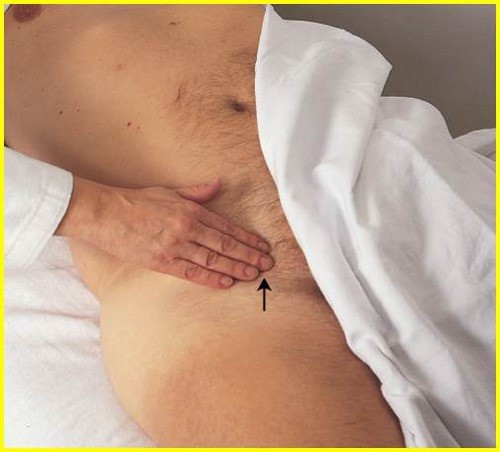A nurse is reporting a client’s laboratory tests to the provider to obtain a prescription for the client’s daily warfarin.
Which of the following laboratory tests should the nurse plan to report to obtain the prescription for the warfarin?
INR
Fibrinogen level
aPTT
Platelet count
The Correct Answer is A
The correct answer is choice A. INR.
Warfarin is a vitamin K antagonist that inhibits the synthesis of factors II, VII, IX, and X in the liver.
These factors are part of the extrinsic and common pathways of coagulation, which are measured by the prothrombin time (PT) and the international normalized ratio (INR).
The INR is a standardized way of reporting the PT that accounts for the variability of different reagents and instruments.
The INR is used to monitor the therapeutic effect of warfarin and to adjust the dose accordingly.
The target INR range depends on the indication for warfarin, but it is usually between 2 and 3 for most conditions.
Choice B is wrong because fibrinogen level is not affected by warfarin.
Fibrinogen is a precursor of fibrin, which forms the final step of the coagulation cascade.
Fibrinogen level can be decreased in conditions such as disseminated intravascular coagulation (DIC), liver disease, or severe bleeding. Choice C is wrong because aPTT is not affected by warfarin.
aPTT measures the intrinsic and common pathways of coagulation, which are mainly dependent on factors VIII, IX, XI, and XII.
These factors are not inhibited by warfarin.
aPTT is used to monitor the effect of heparin, a direct antithrombin agent that inhibits thrombin and factor Xa.
Choice D is wrong because platelet count is not affected by warfarin.
Platelets are cell fragments that adhere to damaged blood vessels and form aggregates to initiate hemostasis.
Platelet count can be decreased in conditions such as immune thrombocytopenia (ITP), heparin-induced thrombocytopenia (HIT), or bone marrow suppression.
Normal ranges:
- INR: 0.8-1.2
- Fibrinogen: 200-400 mg/dL
- aPTT: 25-35 seconds
- Platelet count: 150-450 x 10^9/L References:
Nursing Test Bank
Naxlex Comprehensive Predictor Exams
Related Questions
Correct Answer is A
Explanation
Choice A reason:
Measuring the arm circumference above the insertion site daily is appropriate. When planning care for a client scheduled to receive a peripherally inserted central catheter (PICC) in the arm, it is appropriate for the nurse to include measuring the arm circumference above the insertion site daily. This intervention is essential to monitor for any signs of complications, such as edema or swelling, which could indicate thrombosis or infiltration at the insertion site.
Choice B reason:
Administering sedation Administering sedation is not a routine intervention for a PICC insertion procedure is inappropriate. Sedation might be considered for certain procedures, but it is not typically used for PICC insertions. PICC insertions are generally performed with local anaesthesia at the insertion site.
Choice C reason:
Scheduling an MRI post procedure to verify placement An MRI is not typically used to verify the placement of a PICC. The placement of a PICC is usually confirmed using X-ray or other imaging methods that can visualize the catheter's location within the central veins. Post-procedure verification of PICC placement is essential to ensure proper positioning and to prevent complications.
Choice D reason:
Using gauze to secure an arm board to the involved extremity Using gauze to secure an arm board to the involved extremity is not a common practice for securing a PICC. After a PICC insertion, a securement device specifically designed for PICCs is typically used to secure the catheter in place and prevent movement.
Correct Answer is C
Explanation

This is because coarctation of the aorta is a congenital condition where the aorta is narrow, usually in the area where the ductus arteriosus inserts. This causes a decrease in blood flow to the lower body, resulting in weak or absent pulses in the femoral arteries.
The other choices are incorrect for the following reasons:
- Choice A, frequent nosebleeds, is not a typical sign of coarctation of the aorta.
Nosebleeds can be caused by many factors, such as dry air, allergies, trauma, or bleeding disorders.
- Choice B, upper extremity hypotension, is also not a common finding in coarctation of the aorta. In fact, patients with this condition may have high blood pressure in the upper extremities due to the increased resistance of the narrowed aorta.
- Choice D, increased intracranial pressure, is not directly related to coarctation of the aorta.
Increased intracranial pressure can be caused by various conditions that affect the brain, such as head injury, stroke, infection, or tumor.
Normal ranges for blood pressure and pulse vary depending on age, sex, and health status.
However, some general guidelines are:
- Blood pressure: less than 120/80 mmHg for adults; less than 95/65 mmHg for infants.
- Pulse: 60 to 100 beats per minute for adults; 100 to 160 beats per minute for infants.
Whether you are a student looking to ace your exams or a practicing nurse seeking to enhance your expertise , our nursing education contents will empower you with the confidence and competence to make a difference in the lives of patients and become a respected leader in the healthcare field.
Visit Naxlex, invest in your future and unlock endless possibilities with our unparalleled nursing education contents today
Report Wrong Answer on the Current Question
Do you disagree with the answer? If yes, what is your expected answer? Explain.
Kindly be descriptive with the issue you are facing.
